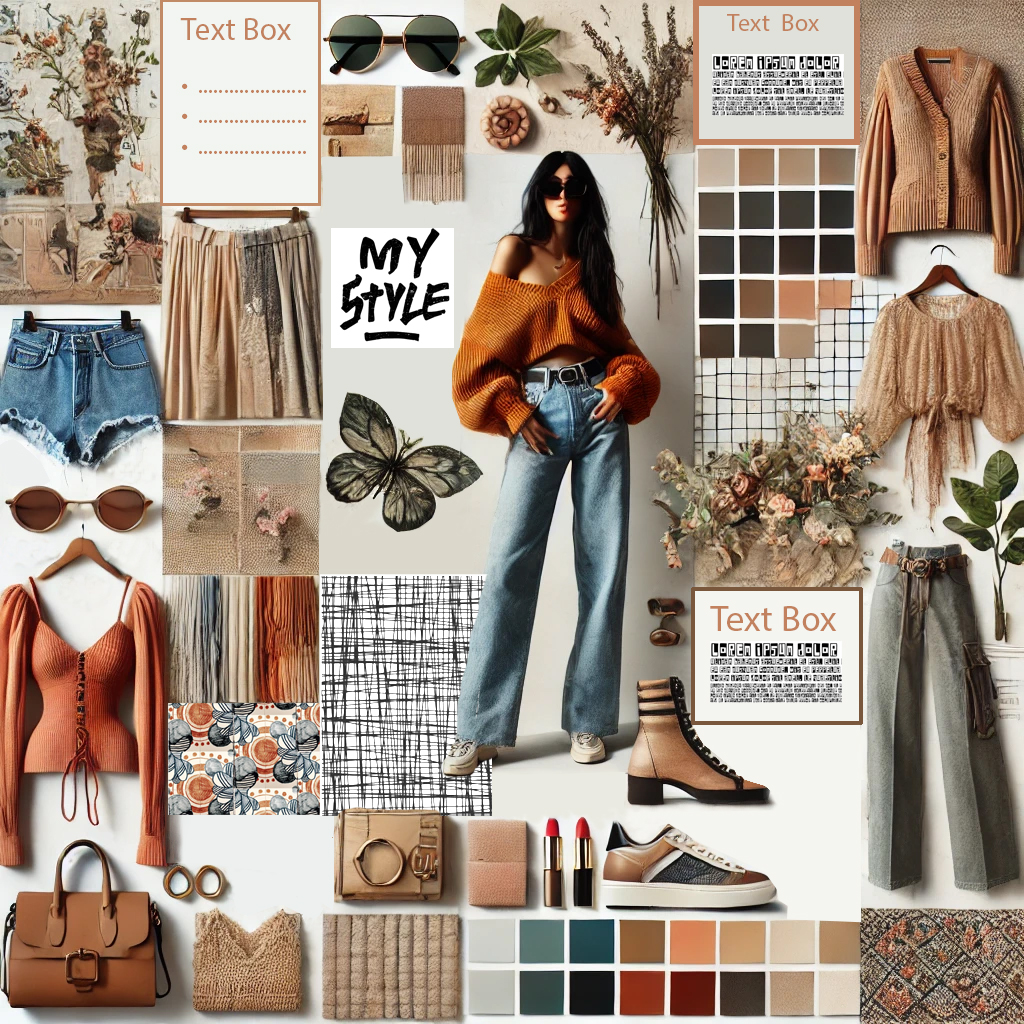My Fashion Identity

My Fashion Identity
In this lesson, students will create a personalized Mood Board fashion project that reflects their unique style, inspirations, and knowledge of fashion.
Step 1: Fashion Interest & Inspiration (10–15 minutes)
Reflection Questions (written and verbal):
- What are your favorite colors, patterns, and textures in fashion?
- Who or what influences your style (e.g., celebrities, culture, music, history)?
- How do you express yourself through clothing and accessories?
Task: Using Canva (digital) or another digital application, students will design a personal fashion mood board.
Mood Board Elements:
- Images of clothing, accessories, and styles they love.
- Color palettes, patterns, and textures that inspire them.
- Words or quotes that describe their fashion aesthetic.
1. Sign in to Canva
- Go to Canva and log in or sign up for a free account.
- Click on "Create a Design" and choose "Mood Board" or "Presentation" as the format.
2. Choose a Template
- In the Canva search bar, type “Mood Board” to find pre-made templates.
- Pick a layout that suits your aesthetic (you can change colors, fonts, and images later).
3. Collect Images and Elements
Upload Your Own Images
- Find fashion inspiration from Pinterest, magazines, or personal photos.
- Click "Uploads" → "Upload Files" to add images to Canva.
Use Canva’s Built-in Elements
- Go to "Elements" and search for:
- Clothing (e.g., sneakers, dresses, jackets)
- Accessories (hats, jewelry, bags)
- Textures (denim, lace, leather)
- Color palettes (to showcase favorite colors)
- Go to "Elements" and search for:
4. Organize Your Mood Board
- Arrange images in a way that visually represents your fashion identity.
- Add text boxes to describe your style, favorite brands, or inspiration.
- Use color swatches to highlight key colors that define your fashion aesthetic.
5.Final Touches & Save
- Adjust layouts, colors, and fonts to make your board unique.
- Click "Download" (PNG or PDF format) to save your design.
- Share with the class and present your fashion mood board!
3. Consolidation & Connection (15–20 minutes): Presentation & Class Discussion
Students present their mood boards to the class, explaining:
- Why they chose certain images, colors, or textures.
- What their fashion style communicates about their personality or cultural influences.
- How external influences (e.g., social media, history, music) shape their fashion identity.
Discussion Prompts:
- How does personal style evolve over time?
- Can fashion challenge societal norms or express activism?
- What connections do you see between your classmates' styles and larger fashion trends?
Last modified: Saturday, 1 March 2025, 6:58 AM